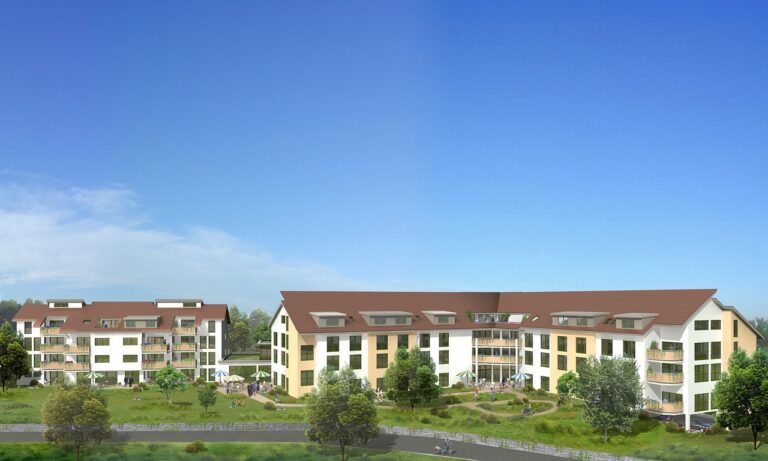Exploring the Types, Benefits, and Strategies in Multifamily Real Estate
Multifamily real estate investment stands out as a compelling opportunity for sophisticated investors seeking to diversify their portfolios, generate stable income, and achieve long-term capital appreciation. With various property types, strategic benefits, and innovative approaches available, multifamily investments offer a unique blend of advantages that cater to both seasoned investors and newcomers.
Key Takeaways:
- Multifamily real estate includes various property types such as duplexes, triplexes, apartment complexes, and townhouses.
- Key benefits include steady cash flow, tax advantages, scalability, and recession resistance.
- Investment strategies range from value-add and yield play to development and distressed investments.
- Multifamily properties offer a hedge against inflation and economic downturns.
Types of Multifamily Properties
Classifications and Characteristics
Multifamily properties are generally classified into Class A, B, C, and D, each offering different risk levels, rewards, and investment strategies:
- Class A: These are high-end properties with modern amenities, located in prime areas, attracting affluent tenants.
- Class B: Slightly older properties, well-maintained, and located in desirable areas. They offer stability and moderate returns.
- Class C: Older buildings, often requiring renovations. They are located in less desirable areas but offer higher return potential through value-add strategies.
- Class D: Generally, the oldest properties in economically distressed areas. They carry the highest risk but also the potential for significant returns if rehabilitated successfully.
Understanding these classifications helps investors align their risk tolerance and investment goals with the appropriate property type.
Benefits of Multifamily Real Estate Investment
Steady Cash Flow and Income Diversification
One of the primary attractions of multifamily real estate is the potential for steady cash flow through diversified income streams. Unlike single-family rentals, multifamily properties generate rental income from multiple units, reducing dependency on a single tenant.
“Investing in multifamily real estate is inherently less risky than many other real estate investments. This is primarily because the risk is spread over many units instead of a single unit.” – Christopher Stout, Principal of StoutCap
Tax Advantages
Multifamily investments offer several tax benefits, including deductions for mortgage interest, property taxes, and depreciation. These deductions can significantly reduce taxable income, enhancing overall profitability.
“The multifamily real estate sector offers an array of tax benefits. Investors can capitalize on deductions related to mortgage interest, property taxes, and depreciation.” – Lala Elizondo, Managing Partner of Tule Capital
Scalability and Economies of Scale
Owning multiple units within a single property allows investors to achieve economies of scale, reducing per-unit operational costs and increasing overall profitability. This scalability makes multifamily properties an efficient way to grow a real estate portfolio.
Recession Resistance and Inflation Hedge
Multifamily properties are resilient during economic downturns due to the constant demand for rental housing. Short lease terms allow for rent adjustments in response to inflation, providing a hedge against rising costs.
“During times of inflation or economic recession, I’ve found that multifamily properties are often resilient. The consistent demand for rental housing, even in challenging economic environments, can make multifamily real estate an attractive hedge against inflation and a potential safeguard during economic downturns.” – Lala Elizondo
Investment Strategies in Multifamily Real Estate
Value-Add Strategy
The value-add strategy focuses on acquiring underperforming properties and enhancing them through renovations and operational improvements. This approach can significantly increase property value and rental income.
“The key to success in value-add investments lies in the ability to execute a well-planned renovation and rebranding campaign that enhances the property’s appeal to tenants and, consequently, its rental income.” – TAAS Investments
Yield Play Strategy
Yield play involves acquiring stable, income-generating properties with minimal improvement needs. This strategy offers lower risk and predictable cash flow, making it ideal for conservative investors.
Development Strategy
The development strategy entails constructing new multifamily units from the ground up. While this approach carries higher risks, it can offer substantial capital appreciation and the satisfaction of creating modern, high-demand properties.
Distressed Investments
Investing in distressed properties involves acquiring underperforming assets at a discount, addressing their issues, and repositioning them in the market. This strategy requires a high tolerance for risk but can yield significant rewards.
Navigating the Multifamily Real Estate Market
Market Analysis and Research
Successful multifamily investment requires comprehensive market research to identify lucrative opportunities. Factors such as population growth, job markets, rental demand, and local economic conditions play a crucial role in determining a property’s potential.
Financing Options
Exploring various financing options, including traditional mortgages, government-backed loans, and private financing, allows investors to tailor their approach based on their financial goals and risk tolerance.
Conclusion: The Strategic Advantage of Multifamily Investments
Multifamily real estate investment presents a robust opportunity for sophisticated investors to achieve steady income, long-term capital appreciation, and portfolio diversification. By understanding the types of properties, leveraging tax advantages, and employing strategic investment approaches, investors can unlock the full potential of this dynamic sector.
The multifamily real estate landscape is not just about acquiring properties; it’s a dynamic journey filled with opportunities to create value, foster tenant satisfaction, and secure financial stability. Embracing this journey with a strategic mindset and a proactive approach can lead to prosperous outcomes and lasting wealth.

